I first came across the work of James Gurney when my daughter was into dinosaurs and we read the Dinotopia books together. It wasn’t until a few years later that Lindly Haunani asked if I knew about his posts on color. Since then I’ve faithfully checked into his blog, Gurney’s Journey, at least once a week.
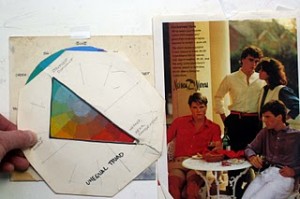 Some of my favorite posts in his blog are the series about gamuts and color masking. Gurney has his own version of a CMYRGB color wheel that he calls a YURMBY wheel. His gamuts are sections of this wheel. The interactive Gamut Mask developed by Richard Robinson is a fun way to play with this idea.
Some of my favorite posts in his blog are the series about gamuts and color masking. Gurney has his own version of a CMYRGB color wheel that he calls a YURMBY wheel. His gamuts are sections of this wheel. The interactive Gamut Mask developed by Richard Robinson is a fun way to play with this idea.
I am constantly trying to figure out more about how color works. Gurney’s book, Color and Light, includes many of his posts on color and is a must read for anyone interested in color phenomenon.
Yesterday when I checked his site Gurney had a link to Scott McDaniel’s blog, Ideas Made of Light. McDaniel calls himself “. . . someone who is looking at what other artists have done so I can figure out how to produce the images in my head.”
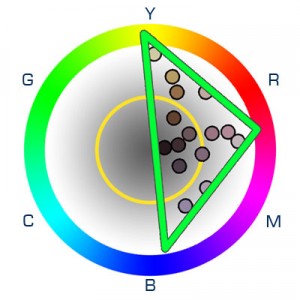
McDaniel’s recent post features one of Gurney’s paintings, “Flights of Fancy” shown above. He presents a very detailed analysis that includes sections on the colors, the values and the saturations, as well as composition. Instead of referring to the traditional hue harmonies (monochromatic, analagous, complementary, etc) he uses Gurney’s gamut system to analyze the color scheme.
McDaniel is trying to learn from other artists by analyzing what works. Here’s what Gurney said about McDaniels analysis.
“It’s interesting for me to read such a post-mortem. I don’t recall thinking consciously about all these things at the time.
I recall playing lots of music and just thinking of the feeling of flying. But his analysis makes sense. I think a lot of things that we think about consciously when we’re looking at paintings become unconscious (hopefully) when we’re actually in the act of painting. The mind works in strange ways.”
In workshops I try to stress that analysis happens after the work is done, not before. Since I am an analyzer by nature, its tempting to try to decide everything about a project ahead of time, to think about what I am trying to communicate and then design the color scheme, the contrasts, the mood. But over the years I’ve learned its a combination of thinking and not thinking that works the best. The reality is that my work is always better if I just get started with an inspiration or an intention and then don’t think too much it.

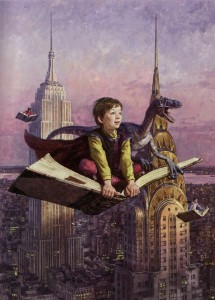
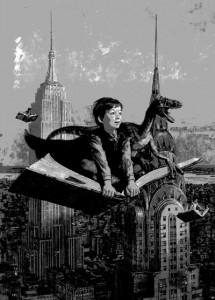
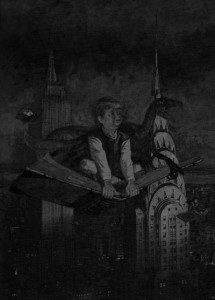

August 18, 2011 at 11:38 pm
Thanks Joann. If you like his blog then I highly recommend his latest book. He comes at color from the same place I do – curiosity and wonder!
August 17, 2011 at 7:41 am
I love Gurney’s blog 😀 I’ve been reading it for a couple of years now and have learned so much about color theory. Much of it does translate over to beading well. Thanks for passing it on!